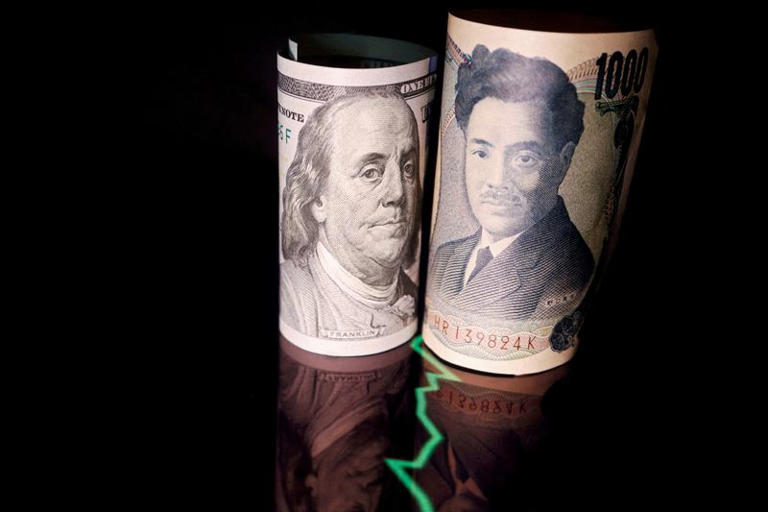On Friday, the euro experienced a notable decline, hitting its lowest level in five months. This drop was largely driven by signals from the European Central Bank (ECB) suggesting a potential rate cut, despite the robust performance of the U.S. economy, which is expected to delay any rate adjustments by the Federal Reserve until later in the year.
The euro’s downturn was further exacerbated by a broad-based rally of the U.S. dollar, which pushed the Japanese yen to a new 34-year low. Investors closely monitored these developments, anticipating potential intervention from Japanese officials to stabilize the yen’s decline.
The euro fell to $1.0644 and was down 0.67%, hovering just above that level. It was poised to record a 1.5% decline for the week, marking its largest weekly drop since September 2022.
The shift in investor sentiment regarding Fed rate cuts initially stemmed from a higher-than-expected U.S. inflation report earlier in the week. This prompted a revision of estimated rate cut timelines from June to September. However, the ECB’s indication of potential rate cuts in the summer, driven by a sharper-than-expected decline in inflation within the eurozone, reinforced expectations of divergence between the ECB and the Fed.
Jane Foley, head of FX strategy at Rabobank, highlighted the significance of the ECB’s comments in reaffirming speculators’ expectations, leading to the euro’s movement.
Despite the euro’s decline, Foley noted that a weaker euro may not necessarily be a cause for concern for European policymakers. Instead, it could benefit exporters in countries like Germany, where economic growth has been sluggish.
The dollar index, which measures the dollar against six major currencies, surged to a five-month high of 105.94, registering a 1.5% increase for the week, its largest five-day rally in 1-1/2 months. This rally was driven by the widening gap between U.S. and German bond yields, making U.S. bonds more attractive and bolstering the dollar.
The British pound also faced downward pressure, trading at its lowest level since mid-November, largely influenced by the strength of the dollar.
Asian currencies, including the Japanese yen and China’s yuan, felt the heat from the surging dollar. The yen remained under pressure, reaching its highest level since mid-1990, while the yuan remained relatively stable despite disappointing export and import data for March.
Overall, the dollar’s strength continued to dominate currency markets, with currencies like Sweden’s crown also experiencing sharp declines after weaker-than-expected inflation data, raising expectations of interest rate cuts by the central bank.
As currency movements continue to be influenced by global economic developments and central bank policies, investors remain vigilant for further signs of intervention and policy adjustments to navigate the evolving landscape.
